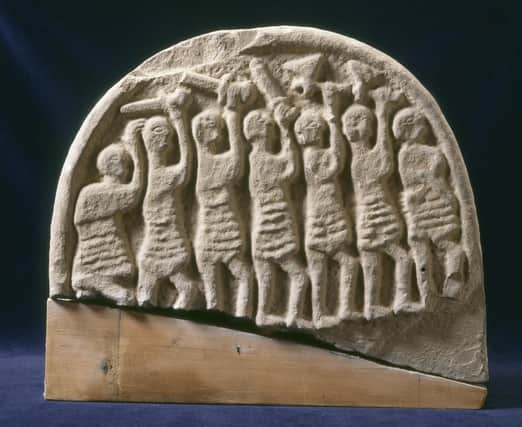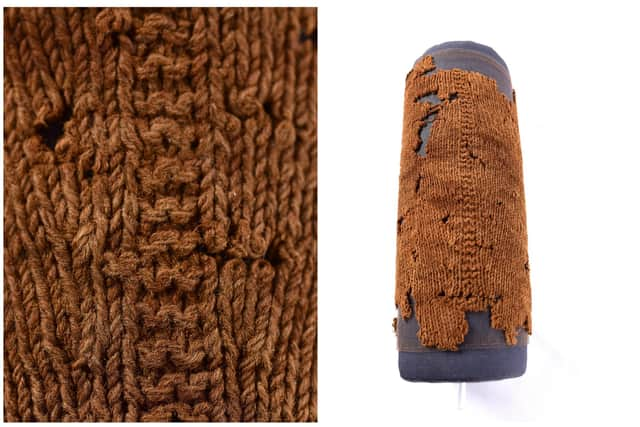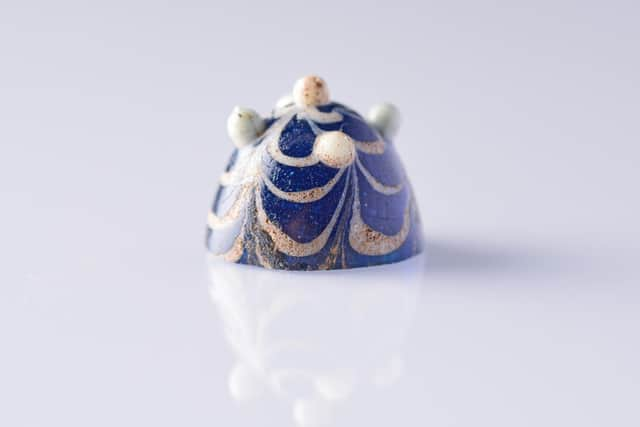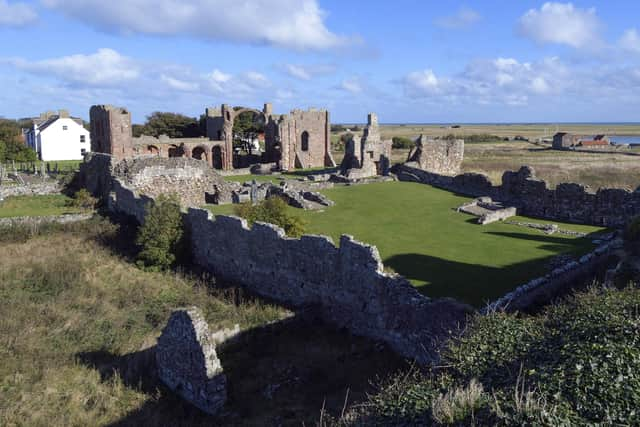Fascinating artefacts which have never been on public display before go on show at Lindisfarne


From tomorrow (Saturday), visitors to Lindisfarne Priory will be able to set eyes on Britain’s first known prayer bead necklace, one of the earliest surviving examples of knitting found in Europe and a recently discovered Anglo-Saxon glass gaming counter.
The new museum display explores the island as one of the most important centres of early English Christianity and its fate at the hands of Viking raids. A new monument in the priory ruins also marks where St Cuthbert – northern England’s most revered saint – was originally buried.
Advertisement
Hide AdAdvertisement
Hide AdSusan Harrison, English Heritage’s north collections curator, said: “Lindisfarne was and has remained a site of huge international significance, not only in its influences on the practices of Christianity in England, but also as the site of the first significant attack by Vikings in western Europe.


"The wealth of artefacts we have now been able to put on display in the museum is truly astounding, from the famous Viking raider stone perhaps commemorating that first attack, to recently excavated items, like Britain’s first prayer beads, never before on display.
"The beautiful new monument to St Cuthbert also adds the final layer to the story, grounding his memory within the ruins of the priory and marking the spot that monks, in the early 1100s, believed to be his original burial place and where they may have sited their own shrine.”
Other amazing artefacts on display for the first time include a necklace made from salmon vertebrae, recently found on a skeleton on Lindisfarne and dating back to the 8th or 9th century
Advertisement
Hide AdAdvertisement
Hide AdThe Anglo-Saxon glass gaming counter has 21 unique name stones, many inscribed with both runic and Latin text (used to identify the dead) found close to the priory site.


Fragments of a knitted woollen sleeved waistcoat, dating to the 17th century, is believed to be one of the earliest surviving examples of knitting in Europe.
The new monument to St Cuthbert marks his original burial place. He was laid to rest in a stone coffin on Lindisfarne in 687 but when monks opened his tomb 11 years later, they discovered his body had not decayed.
This was interpreted as a sign he was a saint, and miracles started to be reported at his shrine. The island soon became a major pilgrimage centre but after a number of viking raids, St Cuthbert’s coffin was moved to Durham Cathedral.
Advertisement
Hide AdAdvertisement
Hide AdMade from large a basalt boulder found locally, the monument is inset with Frosterly marble as a nod to the grave slab which marks St Cuthbert’s final resting place at Durham.


Elsewhere in the museum, new commissions include a newly recorded audio poem, The Refuge Box, by Katrina Porteous, which features a clip of a rescue in the waters between the mainland and Holy Island.
Artist Olivia Lomenech-Gill – illustrator of JK Rowling’s Fantastic Beasts and Where to Find Them – has also contributed an original artwork inspired by the history of the site and The Refuge Box, and has illustrated six birds and beasts inspired by the Lindisfarne Gospels for a new family trail.